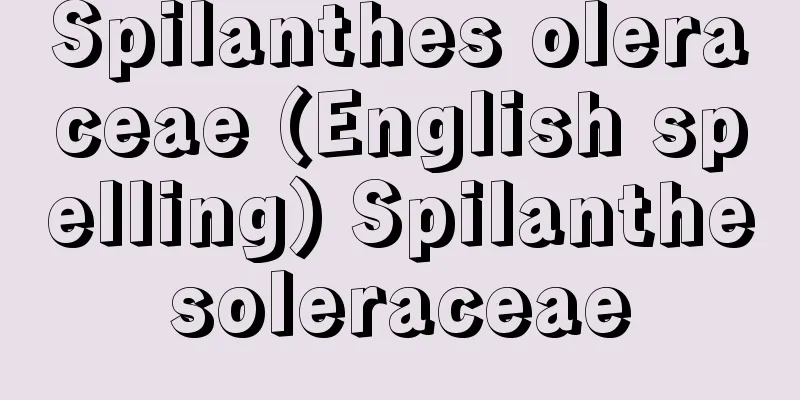Homology - Homology

|
Among the similarities observed between the various characteristics of different living organisms, those that show the same organizational arrangement and have some structural commonality, and can be considered equivalent even if their form and function are not necessarily identical, are called homologous. This is the most basic concept in comparative morphology. The relationship between the swim bladder of fish and the lungs of other vertebrates, and the relationship between the respiratory system of sharks and the Eustachian tube in the middle ear of mammals are called homologous organs. In addition, porphyrin derivatives such as hemoglobin, myoglobin, cytochrome c, and chlorophyll are sometimes called biochemically homologous because they have different functions in different organisms. It was British comparative anatomist Owen, who was also an anti-evolutionist, who distinguished homology from similarity, which means a resemblance in appearance, as technical terms. Although this definition is difficult to apply literally today, its concrete contribution to comparative skeletal morphology cannot be ignored. It was C. Darwin who established homology as the basis for deriving from a common ancestor, that is, as a key concept for understanding phylogenetic relationships. The fact that there are various degrees of difference in homologous structures indicates that structures possessed by ancestors have differentiated in various ways, resulting in derivative specialization. In principle, the criteria for homology could be based on the correspondence between phenotypic traits at various levels in corresponding positions derived from the same germ layer during embryogenesis, or even on the chromosomal and genetic levels. In general, the more independent homologous traits found between species, the stronger the evidence for closer phylogenetic relationships. A phylogenetic group is bound together by its own homology, and each phylogenetic group is connected by another homology. In practice, careful consideration is required on a case-by-case basis as to what is considered to be homologous. For example, the confirmation of homology between eukaryotic intracellular organelles (such as mitochondria and chloroplasts) and prokaryotic aerobic bacteria and primitive cyanobacteria is considered to be strong evidence for the symbiotic theory, which claims that eukaryotic cells originated from symbiosis with prokaryotes. This explanation overturns conventional wisdom. The homology that unites all living organisms is usually based on the universality of the genetic material, deoxyribonucleic acid (DNA), and the coding system that translates that genetic information into amino acids. [Akira Endo] [Reference] |Source: Shogakukan Encyclopedia Nipponica About Encyclopedia Nipponica Information | Legend |
|
別々の生物体のさまざまな形質間にみられる類似性のうち、体制的に同一の配置を示し構造的にもなんらかの共通性が認められ、形態や機能がかならずしも一致していなくても、互いに等価であるとみなしうる関係を相同という。比較形態学のもっとも基本的な概念である。 魚類のうきぶくろと、ほかの脊椎(せきつい)動物の肺との関係や、サメの呼吸器と哺乳(ほにゅう)類の中耳にあるエウスタキオ管(エウスターキョ管)の関係などは相同器官という。また、ヘモグロビン、ミオグロビン、チトクロムcやクロロフィルなどのポルフィリン誘導体は、異なった生物群で異なった機能をもつことから、生化学的相同ということがある。 相同と外見上の類似性を意味する相似とを術語として区別したのは、反進化論の論客でもあったイギリスの比較解剖学者オーエンであった。その定義は文字どおりには現在では通用しにくいが、骨格の比較形態学での具体的な貢献は無視できない。相同を、共通の祖先に由来することの根拠、つまり系統関係を理解する鍵(かぎ)概念として確立したのは、C・ダーウィンである。相同構造にさまざまな程度の差異がみられることは、祖先のもっていた構造が多様に分化し、派生的に特殊化が生じたことを示すというわけである。 相同の規準は、胚(はい)発生上の同一の胚葉に由来する、対応する配置にあるさまざまなレベルの表現型形質間や、染色体さらに遺伝子レベルでの対応にまで求めることも原理的には可能であろう。一般に、種間に互いに独立な相同形質がより多く認められれば、それはより近縁な系統関係を示す強い根拠になる。ある系統群は独自の相同性でくくられ、また各系統群は別の相同性でつながれる。実際には、何を相同とみなすかについては、場合に応じて慎重な検討が必要とされる。たとえば、真核生物の細胞内小器官(ミトコンドリアや葉緑体など)と原核生物の好気性バクテリアや原始藍藻(らんそう)などとの相同性の確認は、真核細胞の起源を原核生物の共生に求める共生説の有力な根拠とされている。これは従来の通念をひっくり返す説明である。 全生物をくくる相同性は、遺伝物質のデオキシリボ核酸(DNA)と、その遺伝情報をアミノ酸へ翻訳する暗号系の普遍性に求めるのが普通である。 [遠藤 彰] [参照項目] |出典 小学館 日本大百科全書(ニッポニカ)日本大百科全書(ニッポニカ)について 情報 | 凡例 |
>>: Transmission capacity - Sodenyo-ryo (English spelling)
Recommend
《Arju》 - Arju
...The reasons for the lack of widespread newspap...
Mount Hakken
The main peak of the Omine mountain range, rising...
Fujiwara no Tametoki
Dates of birth and death unknown. A man of letter...
Argentoratum - Argentoratum
…In addition to the museum that houses Italian, F...
Otarashihiko Oshirowake - Otarashihiko Oshirowake
…He is recorded as the 12th emperor in the Tenno-...
All-India States' Peoples Conference
The common language of the inhabitants was Malaya...
Ezo Kanrei - Ezo Kanrei
During the Kamakura period, this was a position c...
Crassulaceae - Crassulaceae
A perennial plant of the Crassulaceae family (APG...
Revolutionary Russia
...Among them, the Socialist Revolutionary Allian...
Contact
…During the Christian era, it was also called “ko...
Face showing - face showing
One of the annual events of Kabuki. In the Edo pe...
Shipping Act (USA) (English) ShippingAct
… However, not all shipping conferences are in a ...
Mahonia aquifolium (English spelling)
… [Tsuneo Nakamura]. … *Some of the terminology t...
Serapis (English spelling)
Egyptian male deity. A combination of Osiris and A...
Wat Phra Kaeo (English name) WatPhraKaeo
… [Tanabe Shigeharu] [Buddhist temple] There are ...









